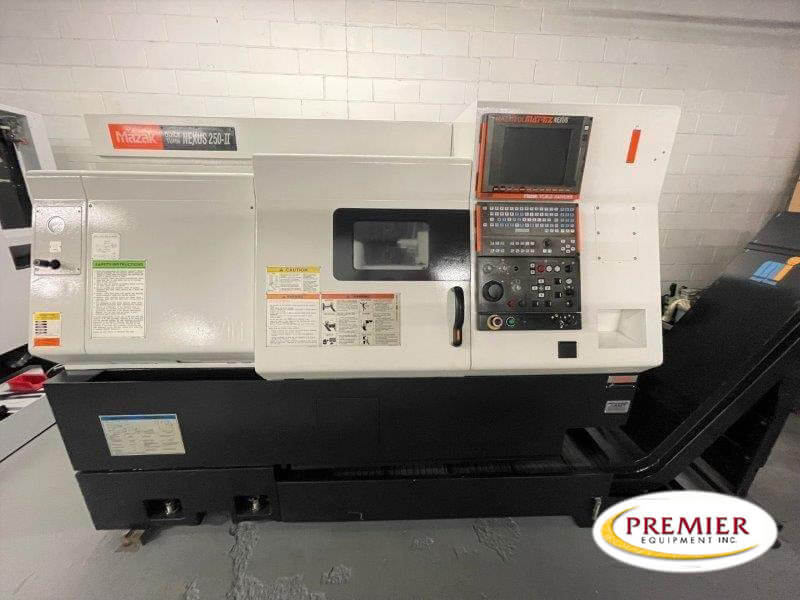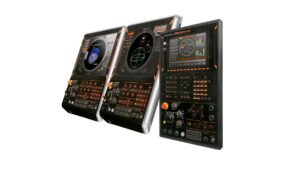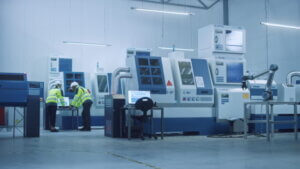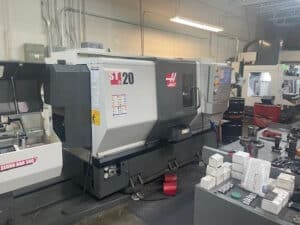Computer numerical control machines are a mainstay of the manufacturing sector, enabling precise, consistent and efficient fabrication of parts and products that would otherwise not be possible. If you’re looking to get your startup off the ground or expand your business’s scope and capabilities, know what to look for when investing in used CNC machines. Check out some of the most common types of CNC machines and what they’re used for.
1. Mills
The mill is one of the most prominent pieces of equipment used in CNC machining, used for subtractive manufacturing on a variety of materials, including metal, wood and glass. The workpiece is held in place while cutting, drilling and engraving tools are moved about it, directed by G code input into the computer. Typically, CNC milling machines are classified as 3-axis machines, able to orient tools horizontally, vertically and laterally. Some can rotate tools around one or two of those axes; such machines would be classified as 4- or 5-axis models, respectively.
While these machines are often fairly bulky and expensive as a result, they’re a highly versatile option. A used CNC mill is a worthwhile investment for custom woodwork and metalwork.
2. Lathes
Lathes have seen use in manufacturing since the 19th century; modern lathes use CNC systems to perform with greater efficiency and accuracy. The key difference between a mill and a lathe is that lathes operate by spinning a workpiece at high speeds to cut, drill and grind around the axis of rotation. CNC lathes are sometimes called turning machines because of this behavior.
Though restricted in operation by needing to work around the axis of rotation — making them 2-axis machines — the long use of lathes makes them reliable and well-understood. For parts with cylindrical symmetry, the lathe is quick and effective. Using fewer axes also means they can be more compact than other machines.
3. Grinders
In CNC machining, grinders are typically used for applying finishing touches to parts shaped with a mill or lathe, abrading rough surfaces to achieve precise dimensional specifications. With fewer moving parts, a grinder is easier to create G code for, making it a better choice specifically for grinding compared to more elaborate mills.
4. Cutting Machines
Compared to the more versatile milling machines, cutters benefit from specialization in cutting and engraving materials, with many types of cutters used for specific materials. Like grinders, they frequently see use later in the manufacturing process on a given piece.
Broadly speaking, lasers provide the highest accuracy and finest surface finish, but at the highest price. Plasma cutters offer more power and are less expensive, especially used. Water jets are useful for temperature-sensitive materials, as well as for abrading surfaces with additives.
5. Electrical Discharge Machines
Electrical discharge machines, also called CNC spark machines, use controlled sparks or discharges from a pair of electrodes to erode material from a workpiece, while a dielectric fluid flushes away debris. Though the high temperatures involved prohibit using some materials, these machines are exceptional for accurate, non-contact working of small workpieces that could be easily destroyed by physical force. A CNC-directed EDM is more useful for finely controlled manufacturing of this kind than a cutter, grinder or lathe.
For help finding a used CNC machine for sale, contact us today. Premiere Equipment has a wide stock from trusted brands, all reliable and affordable for growing manufacturers seeking to make a variety of products.



